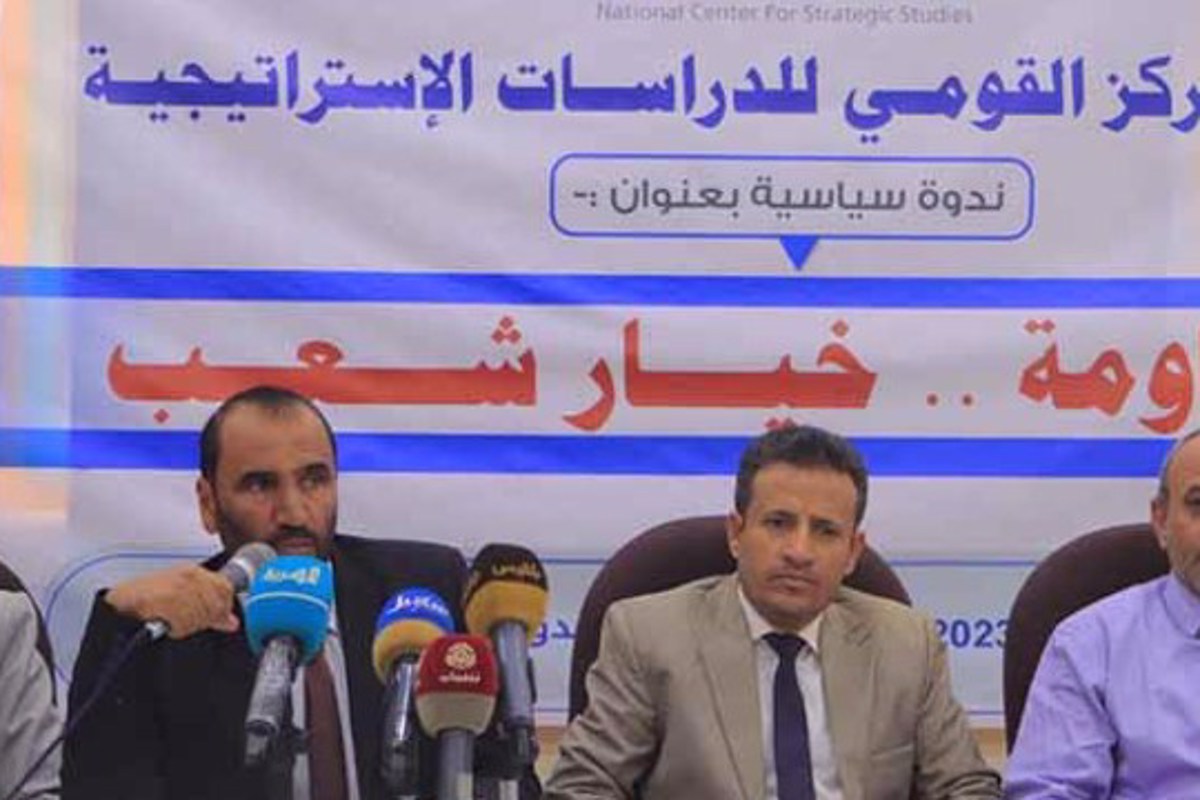The unification of the resistance councils was aimed at unifying the ranks, the word, and the position
2023-11-13

Vice President of the Supreme Council of Popular Resistance, Dr. Abdul Hamid Amer: The unification of the resistance councils was aimed at unifying the ranks, the word, and the position
Marib: private
The Vice President of the Supreme Council of Popular Resistance, Dr. Abdul Hamid Amer said that the unification of the resistance councils in the governorates was with the aim of unifying ranks, speech and position.
Amer added in a symposium entitled “Resistance is a People’s Choice” organized by the National Center for Strategic Studies that resistance, as a culture and an act, was represented by popular resistance, which was and still is the safety valve of the gains, side by side with the National Army.
Emphasizing that popular resistance is our choice as displaced, displaced, hidden and kidnapped Yemenis by the Iranian Houthi militia, which has undermined the state and destroyed the political system
He pointed out that political cautions plunged us into mazes that prolonged the life of the coup and its repercussions until today
The symposium discussed three working papers, the first of which dealt with popular resistance, models that made history, by Dr. Yahya Al-Ahmadi, in which he reviewed a number of the most prominent symbols of resistance and liberation movements in various regions of the world in ancient and modern history, considering resistance a right of peoples to achieve their dignity and achieve their freedom
Dr. Al-Ahmadi called on the popular resistance in Yemen to unite and abandon differences in order to achieve its national goals, as well as to prepare for any challenge, and to have the ability to respond to any attack, stressing the need for the resistance to be organized and have clear leadership, and to develop a clear strategy for struggle
While the second paper dealt with resistance between national need and political caveats, presented by Dr. Omar Radman, in which he stressed that resistance is the choice of the Yemeni people from the first moment of the fall of the state and that the national need for resistance is an urgent necessity in the face of the Houthi militias’ rejection of all peace calls and initiatives and the efforts of regional and international mediators
The third paper dealt with the Yemeni popular resistance, a new era, in which engineer Anwar Al-Humairi presented an account of the Yemeni popular resistance, its launch, and the urgent need to unify its ranks into a comprehensive entity. Al-Humairi considered in his paper that the announcement of the Supreme Council of Popular Resistance represented a glimmer of hope and restored the spirit of resistance, regardless of the position of some or the hesitation of some. Others pointed out that the existence of a comprehensive entity based on reality and not just an idea represents a major victory for the resistance and the national project
The symposium was enriched with interventions that emphasized the symbolism, history, struggle, sacrifices and presence of the resistance represented at the defining moment, which means the necessity of rallying around it and adhering to the resistance as a lifeline and a way to restore the state

